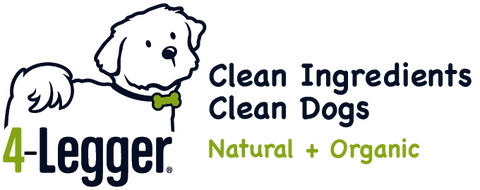Is Your Dog's Water Safe?
We all want the best for our dogs, from high-quality food to all-natural grooming products like 4-Legger.
But have you considered the quality of your dog's drinking water?
Just like us, dogs rely on clean, safe water to stay healthy. Unfortunately, tap water isn’t as safe as we assume, with potential contaminants that could affect both human and pet health.
Hidden Dangers in Tap Water
Many households use tap water for their pets without a second thought.
However, according to the Environmental Working Group (EWG), tap water across the U.S. often contains harmful substances such as:
- Chromium-6 – A known carcinogen made infamous by the film Erin Brockovich.
- PFAS ("Forever Chemicals") – Linked to immune system damage, thyroid problems, and cancer.
- Arsenic – A naturally occurring toxin associated with an increased risk of cancer.
- TTHMs (Total Trihalomethanes) – Byproducts of water treatment chemicals that may cause developmental issues and cancer.
- Nitrate – A fertilizer chemical that can be harmful to infants and pets.
- Haloacetic acids - Commonly found in chlorine treated water but has links to cancer.
- Radon – A radioactive element that can contaminate water and lead to lung cancer.
- Perfluorooctanoic acid (PFOA) – Persistent chemical found in the environemnt that accumulate in people and pets with side effects including cancer, endocrine disruption, accelerated puberty, liver and immune system damage, and thyroid changes. Also referred to as “forever chemicals”.
- Trihalomethanes – Cancer-causing contaminants that form during water treatment with chlorine and other disinfectants.
These contaminants pose risks to everyone, but our dogs, cats, and other pets are particularly vulnerable.
Why?
Because of their smaller size and higher consumption of water relative to their body weight, they may be more susceptible to the effects of contaminated water.
How to Check the Safety of Your Tap Water
Wondering if your home’s water is safe for your dog? The EWG Tap Water Database allows you to check the water quality in your area. Simply enter your ZIP code to see a detailed report on your local water supply and any potential contaminants present.
🔎 Find out what's in your tap water here: EWG Tap Water Database
When I checked my own water, I found 17 contaminants, 7 of which exceeded safe EWG health guidelines.

Should You Filter Your Dog’s Water?
If your tap water contains harmful substances, a water filter may be a smart investment for both you and your dog.
In my house we use only filtered water for our dogs water bowl but it is important to note that not all filters are created equal.
EWG tested 10 different countertop water filter brands and found that their effectiveness varied significantly. Unfortunately, EWG has not tested refrigerator filters (yet).
Some filters excel at removing certain contaminants but struggle with others, making it essential to choose the right one for your needs. Factors such as filter longevity, cost, and ease of use also play a role in selecting the best option.
To see which filters perform best and find one suited to your water quality, check out EWG’s guide:
📌 EWG’s 2024 Guide to Countertop Water Filters: View the guide
Reverse Osmosis Water Filters
It is also important to note that most water systems do not filter out natural minerals in water but reverse osmosis systems do.
A reverse osmosis system works by pushing water through a semipermeable membrane that filters out very small particles, including dissolved minerals like calcium, magnesium, and potassium.
These are the minerals that contribute to "hardness" in water, and while they’re beneficial to health in moderate amounts, reverse osmosis doesn't discriminate — it removes contaminants and minerals alike. While most of your essential minerals come from food, not water, some reverse osmosis systems come with a remineralization stage that adds minerals like calcium and magnesium back in for taste and health balance.
Is Your Dog's Water Bowl Safe?
Even if you filter your dog’s water, the bowl they drink from can introduce additional health concerns. Certain materials, such as plastic, can harbor bacteria, leach harmful chemicals, or degrade over time, especially when exposed to sunlight or heat. Opt for stainless steel or high-quality, lead-free ceramic bowls, which are non-porous, easy to clean, and less likely to develop biofilm buildup.
Regularly washing your dog’s bowl with hot, soapy water and disinfecting it a few times a week or daily can help prevent bacterial contamination and keep their drinking water truly fresh and safe.
Final Thoughts
Your dog relies on you for clean, fresh water every day. If you’re concerned about contaminants in your tap water, taking steps to filter it could be one of the simplest yet most impactful ways to protect their health.
Use the resources above to check your water quality and invest in the right filtration system for your household. Your pup will thank you!





